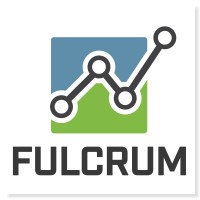Ready to build your own Founder-Led Growth engine? Book a Strategy Call
Frontlines.io | Where B2B Founders Talk GTM.
Strategic Communications Advisory For Visionary Founders
Actionable
Takeaways
Deploy bottom-up penetration to bypass procurement friction and generate authentic adoption signals:
Collins chose theater director sales over superintendent-level contracts despite longer individual deal cycles. This approach avoided forced adoption resistance while creating measurable engagement data from actual product usage rather than mandate compliance. The strategic insight: bottom-up sales generate higher-quality expansion opportunities because satisfied end users become internal advocates who influence broader organizational adoption. Implementation requires identifying decision-makers with both budget authority and day-to-day pain points, then optimizing for usage depth over initial contract size.
Transform support incidents into systematic advocacy generation through zero-effort resolution protocols:
When database corruption lost customer registration data, Ludus manually contacted every affected parent, reconstructed missing information, and delivered complete solutions in organized spreadsheets. This zero-customer-effort approach generates 97-99% satisfaction scores while creating advocacy moments from potential churn situations. The tactical framework: establish incident response that eliminates customer work entirely, document extraordinary efforts taken, and follow up to ensure complete satisfaction. This converts support costs from pure overhead into measurable advocacy generation with direct attribution to pipeline growth.
Engineer feature request workflows for collaborative product development perception and testimonial generation:
Collins maintains attribution tracking for every customer suggestion, notifies requesters when features launch, and credits contributors in public release communications. This systematic approach creates investment psychology where customers feel ownership in product evolution rather than experiencing transactional vendor relationships. The operational mechanics: implement CRM tagging for feature requests with customer attribution, maintain development pipeline visibility for relationship managers, and create regular recognition touchpoints that generate authentic testimonials from customers seeing their ideas implemented.
Capitalize on crisis-driven competitor consolidation through rapid capability expansion and customer acquisition:
During COVID-19, while Ludus approached business failure with 95% revenue loss, they developed social distancing seating configurations and streaming integrations. As competitors failed or lost customer trust through poor crisis management, displaced organizations sought alternatives, creating Ludus's 2021 growth acceleration. This demonstrates the competitive opportunity in market disruptions: companies that maintain product investment during crisis periods position themselves to capture market share from failing incumbents. Strategic preparation requires maintaining development capabilities during revenue downturns and building crisis-specific feature sets before market demand crystallizes.
Counter-position against AI commoditization through human interaction guarantees and relationship depth:
While competitors deploy AI-first support to reduce costs, Collins maintains human availability guarantees including coverage 10 minutes before customer events. This creates differentiation as AI standardizes basic interactions across the industry. The strategic positioning: as routine customer service becomes commoditized through AI deployment, companies maintaining genuine human relationships capture disproportionate value in relationship-dependent markets. Execution requires deliberate investment in support team scaling, clear AI boundary policies, and metrics that measure relationship quality rather than just response time efficiency.
Conversation
Highlights
How Crisis-Driven Competitor Consolidation Creates Winner-Take-All Market Opportunities
A grid of checkboxes and a PayPal integration sold $40,000 worth of Phantom of the Opera tickets. That simple freshman year project became the foundation for a ticketing platform now processing millions annually across thousands of performing arts organizations.
The pivot from side project to market leader wasn’t linear. It required surviving a 95% revenue collapse, systematically engineering customer advocacy through zero-effort problem resolution, and counter-positioning against AI automation trends while competitors retreated to cost-cutting measures.
In a recent episode of Category Visionaries, Zachary Collins, CEO and Co-Founder of Ludus, detailed the execution mechanics behind crisis survival, systematic advocacy generation, and market share capture during industry consolidation.
Revenue Model Alignment Through Fee Structure Inversion
Ludus operates on economic alignment rather than traditional SaaS extraction. Their platform costs performing arts organizations nothing upfront while generating revenue through patron-paid convenience fees.
“On a $10 ticket, it’s $1.25, no Ticketmaster level fees, and we take that $1.25, cover credit card processing, take what’s left over, and give the full face value of the ticket to the organization,” Zachary explains.
This structure eliminates the fundamental tension between software vendors and cash-constrained arts organizations. Revenue scales with customer success rather than against customer budgets. Customers processing over a million dollars annually receive full face value with zero additional costs.
The model emerged from market constraint analysis rather than pricing optimization. Arts organizations couldn’t afford traditional software licensing, but patrons already expected convenience fees. Ludus captured existing willingness-to-pay without adding customer burden.
Bottom-Up Penetration Strategy: Avoiding Procurement Friction
Ludus deliberately chose individual decision-maker sales over institutional mandate strategies. Rather than selling to superintendents who could force district-wide adoption, they targeted theater directors with direct operational pain and budget authority.
“We didn’t want to force people to use our product. We wanted people to use our product because they wanted to use our product,” Zachary explains. “That was a key component of how we thought about our GTM.”
This approach trades initial deal velocity for authentic product-market fit signals. Voluntary adoption generates higher engagement metrics and organic expansion opportunities. Satisfied end users become internal advocates within their institutions, creating natural growth pathways without top-down resistance.
The strategic insight: bottom-up sales provide cleaner validation data because usage patterns reflect genuine value perception rather than compliance behavior.
Zero-Effort Resolution Protocol: Converting Support Incidents to Advocacy Events
Ludus engineered customer support as systematic advocacy generation rather than reactive problem-solving. Their “customer guarantee” ensures human availability during critical moments, including 10 minutes before events.
“There’s always a human there for you when it matters. Whether that’s while you’re actively using Ludus during the day or 10 minutes before your event,” Zachary states.
This produces 97-99% satisfaction scores and 80-90 NPS averages. But the competitive advantage lies in their zero-effort resolution protocol.
When a database corruption bug lost customer registration data due to an apostrophe in form fields, Ludus didn’t instruct customers to re-collect information. “We downloaded a list of all the parents and their emails and their responses, reached out to each parent, put in a Google sheet with the shoe sizes for each student, and then gave that Google sheet back to the program.”
The tactical framework: fix technical issues while eliminating all customer remediation work. Document extraordinary effort taken and follow up for satisfaction confirmation. This converts potential churn events into advocacy-building experiences with measurable pipeline attribution.
Crisis-Driven Market Share Capture Through Capability Investment
COVID-19 eliminated 95% of Ludus’s revenue overnight. “We backed it down to two people, basically almost out of business,” Zachary recalls. But rather than cutting product development, they invested in crisis-specific capabilities.
“We came out with social distancing, a streaming platform,” building features that helped customers navigate lockdown constraints while competitors focused on survival.
Market dynamics shifted dramatically. “A lot of our competitors went out of business or they were acquired or they lost the trust of their customers and pushed a lot of people into the market.”
2021 became their inflection point as displaced customers sought alternatives. The companies that maintained development capabilities during crisis periods positioned themselves to capture market share from failing incumbents.
This demonstrates the strategic opportunity in market disruptions: maintain product investment when competitors retreat to cost-cutting, then capitalize on consolidation-driven customer displacement.
Systematic Feature Attribution for Collaborative Product Development
Ludus transforms feature requests into customer investment psychology through systematic attribution and recognition protocols.
“If a customer has an idea, they give you an idea, write it down, put their name next to it and let them know when it goes out. You can even mention them in a product release like, hey, thanks so much to so and so at company for the great idea,” Zachary explains.
This creates collaborative dynamics where customers feel ownership in product evolution rather than experiencing transactional vendor relationships. The operational mechanics: implement CRM tagging for requests with customer attribution, maintain development pipeline visibility for relationship teams, and create regular recognition touchpoints.
The result: “What I call our army of advocates, which are those customers that are out there fighting for us. Recommending Ludus. A lot of our growth comes from word of mouth.”
Customer advocacy reaches measurable levels: “It blows my mind reading some of these Facebook forums now where somebody asked like, what do you use for ticketing? And Ludus is like mentioned 90% of those comments.”
Counter-Positioning Against AI Commoditization
As competitors deploy AI-first customer service to reduce costs, Ludus maintains human interactions as strategic differentiation.
“We do use AI in the back end, but we don’t allow AI to facilitate our customer interactions,” Zachary explains. “That has really helped us stand out and show that we can really create customer experience.”
This positioning resonates with customers experiencing AI interaction fatigue. “I’m already tired of writing into chat for certain companies and I get an AI response. I’m like, that’s not my question or that’s not the answer I need. I just want to talk to a person for a second.”
The strategic framework: as AI standardizes routine interactions across industries, companies preserving authentic human relationships capture disproportionate value in relationship-dependent markets. This requires deliberate investment in support team scaling and clear AI boundary policies.
Data-Driven Retention Through Usage Pattern Analysis
Ludus identified specific engagement thresholds that predict customer retention through systematic data analysis.
“When you really dive into your customer data, you can start to pull out these data patterns and you say, oh, wow, like okay, if they use three plus features in Ludus, there’s a 99% of customers stay at that point,” Zachary reveals.
This provides actionable onboarding optimization targets. Rather than measuring generic “engagement,” they focus customer success efforts on driving adoption of three specific features within defined timeframes.
The tactical insight: retention prediction models enable proactive intervention strategies and resource allocation optimization based on usage behavior patterns.
Strategic Capital Deployment for Vision Acceleration
After years of profitable bootstrapping, Zachary raised outside funding to accelerate market expansion rather than address cash constraints.
“We did not want to take outside capital if it meant changing our vision. So that was a big part of it too, is very early on, just sharing with our partner investors, like, this is our vision, this is what we want to do. Are you comfortable with that?”
The funding enables broader market penetration: “Whether or not they use this for ticketing, every performing arts organization will use one of our products in one way or another.”
This demonstrates strategic capital deployment: raising when metrics support accelerated growth rather than when cash flow requires external funding.
Implementation Framework for B2B Founders
Ludus’s systematic approach to crisis navigation, customer advocacy, and market expansion offers tactical frameworks for B2B founders:
Revenue model alignment: Structure pricing to correlate your success with customer success rather than creating budget competition.
Procurement strategy selection: Choose bottom-up sales when authentic adoption provides better validation signals than mandated deployment.
Support incident conversion: Engineer zero-effort resolution protocols that transform potential churn into advocacy-building experiences.
Crisis opportunity preparation: Maintain product investment capabilities during market downturns to capture share from retreating competitors.
Feature attribution systems: Create systematic recognition processes that generate collaborative product development psychology.
Counter-positioning timing: Identify industry automation trends that create human relationship differentiation opportunities.
Ludus’s journey demonstrates how systematic execution of these frameworks can transform market disruption from existential threat into competitive advantage, particularly in relationship-dependent B2B markets where trust and service quality drive purchasing decisions.













































